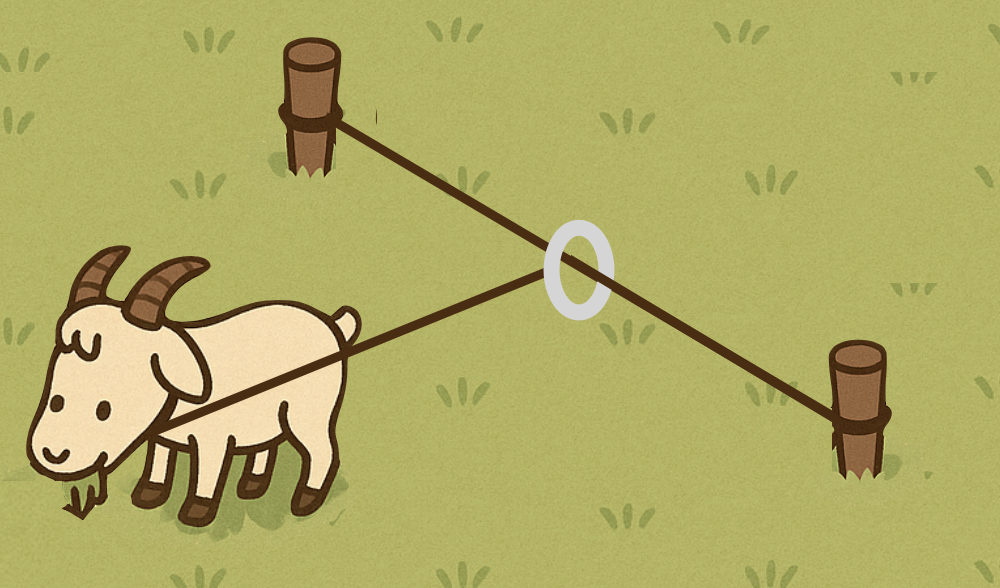Problems
One day, Robinson Crusoe tied a rope tightly between two pegs, placed a sliding ring on it, and then tied the goat to the ring with another rope, as in the picture below. What shape did the goat graze this time?

On another day, Robinson Crusoe used two pegs again. This time, he tied one rope of length \(a\) to the first peg and another rope of length \(b\) to the second peg, both directly to the goat, so that it looked like in the picture below. What shape did the goat graze that day?

One day Robinson Crusoe went for a walk on a plateau, taking his goat with him on a rope of length one meter. He walked along a path in the shape of a rectangle measuring \(1 \,\text{km} \times 3 \,\text{km}\), following its perimeter. What was the shape of the area where the goat could graze while walking with Robinson?
Draw how Robinson Crusoe should use pegs, ropes, and sliding rings to tie his goat in order for the goat to graze grass in the shape of a semicircle.
Draw a picture how Robinson could have used pegs and ropes to tie the wolf and the goat so that the goat grazed an area in the shape of a ring (like a disc with a hole in the middle).
Can two tied wolves keep an untied goat in a triangle?
While studying numbers and their properties, Robinson came across a three-digit prime number whose last digit equals the sum of the first two digits. What are the options for the last digit of this number, given that none of its digits is zero?
When Robinson Crusoe and his friend Friday learned about divisibility rules, Friday decided to proposed his own rule:
if a number is divisible by \(27\), then the sum of its digits is also divisible by \(27\).
Was Friday right?
One day Friday multiplied all the numbers from 1 to 100. The product appeared to be a pretty large number, and he added all the digits of that number to receive a new smaller number. Even then he did not think the number was small enough, and added all the digits again to receive a new number. He continued this process of adding all the digits of the newly obtained number again and again, until finally he received a one-digit number. Can you tell what number was it?